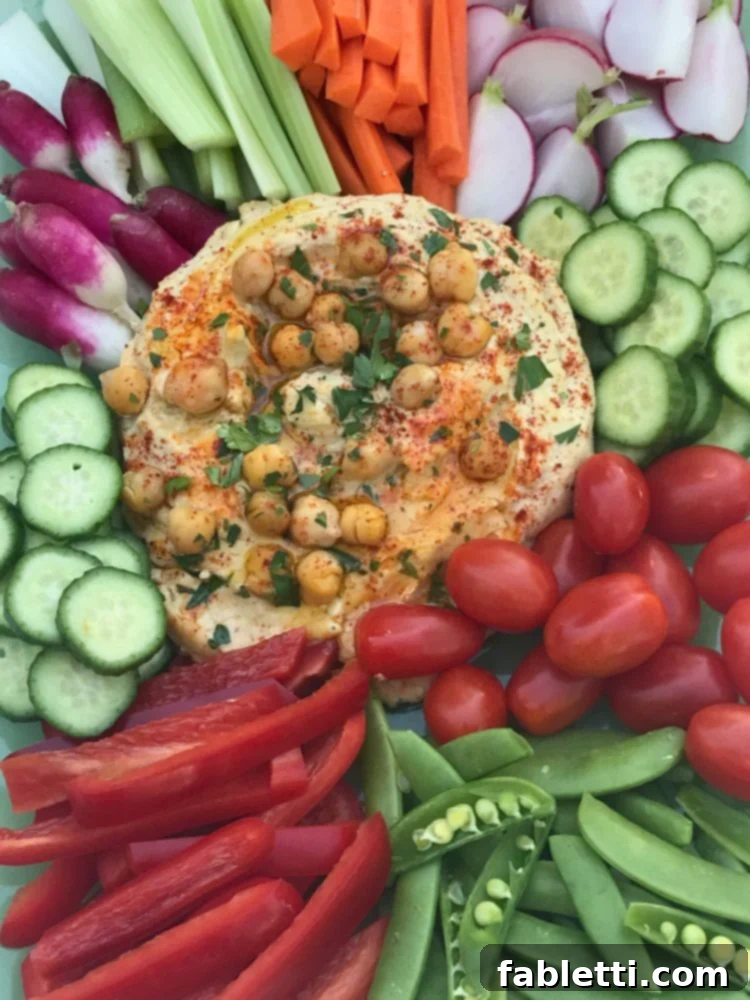Welcome to the ultimate guide to crafting the most exquisite oil-free hummus you’ve ever tasted! Rich, creamy, incredibly nutritious, and bursting with flavor, this homemade delight is a game-changer. Forget expensive, preservative-laden store-bought versions; we’re diving into the simple, cost-effective world of making healthy hummus from scratch using dried chickpeas. Whether you’re a seasoned chef or a kitchen novice, I’ll walk you through every step to ensure your hummus is perfect for appetizers, snacks, or as a vibrant spread for your favorite sandwiches and wraps.
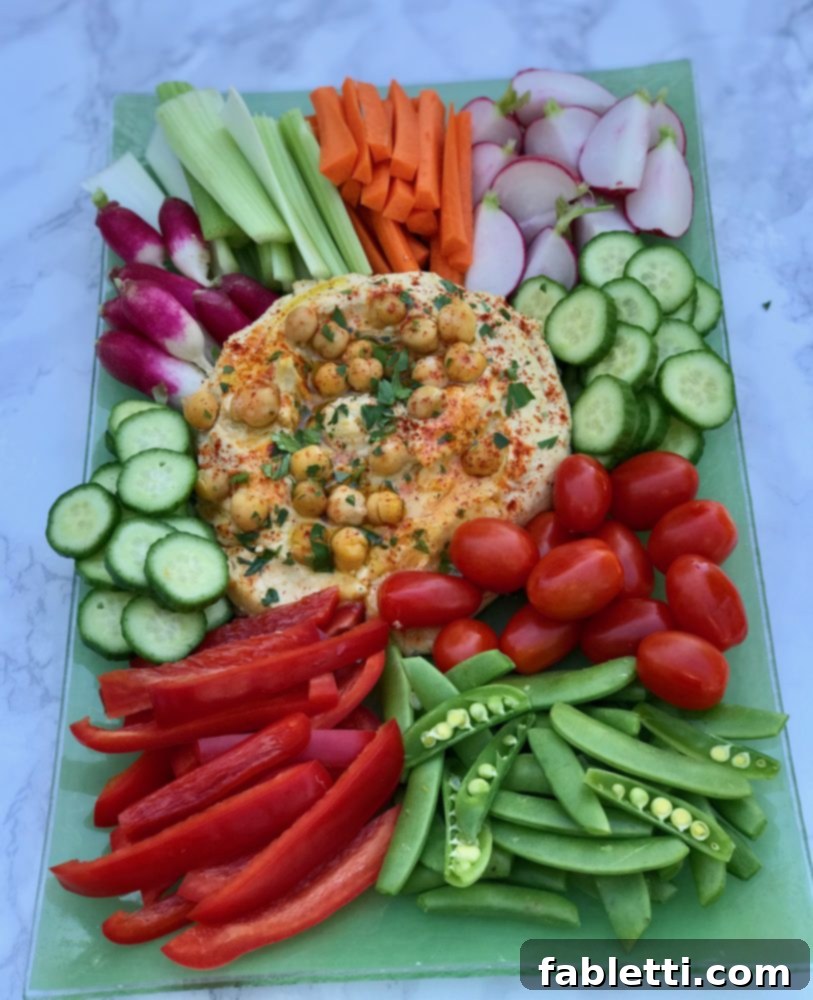
Embracing Wholesome Eating with Homemade Hummus
Life’s celebrations often come with delicious indulgences, and after recent joyous events, I found myself craving a return to my preferred whole foods, unprocessed diet. What better way to jump back into clean eating than with a batch of my all-time favorite oil-free hummus? It’s not just incredibly tasty; it’s one of the most versatile and healthiest ways to incorporate more plant-based goodness into your daily routine. Perfect for meal prep, this hummus stays fresh and delicious in the fridge for up to two weeks, making healthy snacking and meal additions effortless.

The Homemade Advantage: Why Oil-Free Hummus Reigns Supreme
While hummus is generally perceived as a healthy dip, many store-bought varieties are unfortunately loaded with refined oils, artificial preservatives, and excessive amounts of sodium. These additions can undermine the natural health benefits of chickpeas, turning a potentially wholesome snack into something less ideal. The good news? Crafting a genuinely healthy hummus at home is far simpler than scrutinizing nutrition labels at the grocery store for a clean option.
Our oil-free hummus recipe stands out because it achieves an unparalleled creaminess without a single drop of added oil. The secret lies in a generous amount of tahini – a rich sesame paste – combined with a few simple techniques that transform humble chickpeas into a velvety smooth, naturally decadent spread. This approach ensures your hummus is not only delicious but also aligns perfectly with a whole foods, plant-based lifestyle, free from unnecessary fats and artificial ingredients.
Dried Beans vs. Canned Beans: Elevating Your Hummus Experience
For the absolute best flavor and texture in your hummus, I passionately advocate for using dried chickpeas. The difference is truly remarkable, yielding a more profound, earthy taste and a naturally creamier consistency that’s hard to achieve with canned alternatives. Beyond taste, soaking and cooking dried beans yourself makes them more digestible and gives you complete control over the cooking process and sodium content.
I understand that time can be a precious commodity. If your choice boils down to using canned beans for a homemade healthy hummus or resorting to a store-bought version, please opt for the convenience of canned (or boxed) prepared beans. Just be sure to select a brand with no additives or excessive salt. While dried beans offer a superior result, a homemade hummus with quality canned beans will still be infinitely healthier, smoother, and tastier than most commercial options. This recipe is designed to deliver fantastic results either way, ensuring a super tasty and super clean dip for everyone.
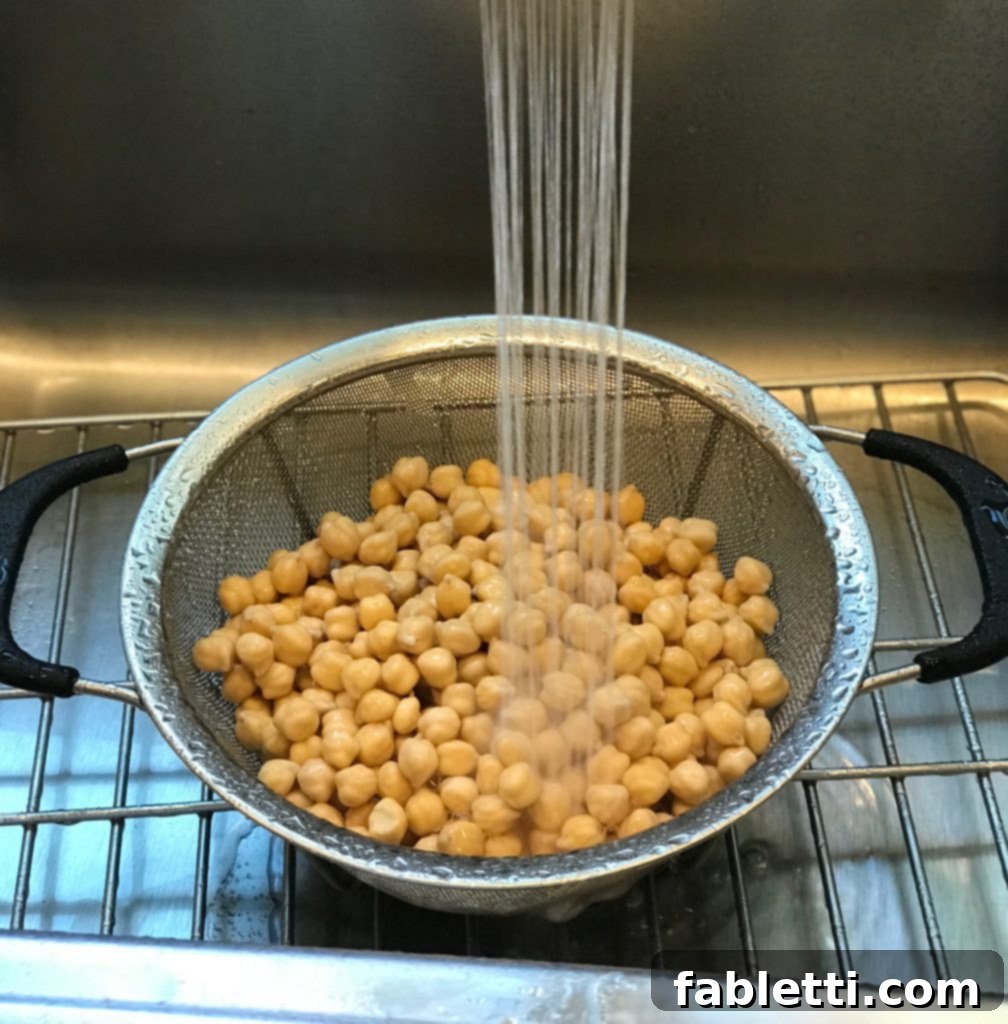
Unlocking the Power of Chickpeas: Remarkable Health Benefits of Hummus
Hummus isn’t just a delicious dip; it’s a nutritional powerhouse, largely thanks to its primary ingredient: chickpeas. Incorporating this humble legume into your diet offers a wealth of health advantages that contribute to overall well-being. Let’s delve into the impressive benefits that make chickpeas, and by extension, hummus, an essential component of a healthy lifestyle:
Chickpeas Increase Satiety and Aid in Weight Management
Chickpeas are exceptionally rich in both protein and dietary fiber, two critical nutrients known for promoting a feeling of fullness and sustained energy. When your body’s nutritional needs are adequately met, you’re less likely to experience cravings for unhealthy, empty-calorie processed snacks. This natural satiety can be a powerful tool in managing weight by reducing overall calorie intake and encouraging healthier eating habits throughout the day.
A Rich Source of Essential Vitamins and Minerals
Beyond protein and fiber, chickpeas deliver an impressive array of essential vitamins and minerals vital for numerous bodily functions. They boast high levels of iron, zinc, folate, phosphorus, and various B vitamins. These micronutrients are particularly crucial for individuals following vegetarian or vegan diets, helping to ensure comprehensive nutrient intake and prevent common deficiencies.
An Excellent Source of Plant-Based Protein
For those adhering to vegetarian, vegan, or flexitarian diets, chickpeas stand out as a fantastic source of plant-based protein. Adequate protein intake is fundamental for muscle repair, growth, and overall bodily function. Incorporating chickpeas into meals like hummus provides a satisfying and complete protein source, supporting your dietary goals without relying on animal products.
Supports Stable Blood Sugar Levels with Slow-Releasing Carbohydrates
The carbohydrates found in chickpeas are primarily complex starches, which are digested slowly by the body. This slow digestion process prevents rapid spikes in blood sugar levels, contributing to more stabilized energy and better glucose control. This makes chickpeas a “good carb” choice, especially beneficial for sustained energy throughout the day and for individuals managing blood sugar.
High in Fiber for Enhanced Digestive Health
The high fiber content in chickpeas plays a crucial role in promoting a healthy digestive system. Fiber adds bulk to stool, facilitating the smooth and efficient movement of food through the digestive tract. This can significantly help in decreasing uncomfortable symptoms of irritable bowel syndrome (IBS) and alleviating constipation, leading to improved gut health and regularity.
Protects Against Heart Disease and Certain Cancers
Numerous studies have highlighted the protective effects of chickpeas against chronic diseases. Their components have been shown to help balance unhealthy cholesterol levels, particularly by lowering LDL (“bad”) cholesterol, and reducing hypertension (high blood pressure). Furthermore, regular consumption can help keep arteries clear from plaque buildup, significantly contributing to cardiovascular health and reducing the risk of heart disease. The fiber and antioxidants may also offer protective benefits against certain types of cancer.
Alkalizing Effect and Enhanced Nutrient Absorption
Chickpeas possess an alkalizing effect on the body, which helps to balance pH levels that can often become too acidic due to modern diets. When combined with a healthy fat like tahini, as in hummus, the bioavailability and absorption of chickpeas’ nutrients are further increased. This synergistic effect ensures you’re getting the most out of every delicious spoonful, contributing to optimal bodily function and overall vitality.

Versatile Serving Ideas and Delicious Pairings
While the recent festivities are still a fond memory, I’m already envisioning countless occasions for this healthy oil-free hummus. It’s truly perfect for any gathering, from casual backyard BBQs and elegant dinner parties to relaxed beach days and busy weeknight meals. Its versatility is unmatched, making it an indispensable part of a balanced diet.
Beyond being a fantastic dip for pita bread or fresh vegetables, this hummus can transform any meal. Spread it generously on your favorite sandwich or wrap for an extra layer of flavor and nutrition. Use it as a base for vibrant bowls, a creamy dressing for salads, or even as a surprising addition to breakfast toasts. The possibilities are endless, and its wholesome ingredients make every bite guilt-free and satisfying.

If you’re looking for more delicious and healthy meal ideas to complement your homemade hummus, here are some of my go-to recipes:
Grilled Potato Salad, these Mediterranean Grilled Veggie Kabobs or Grilled Asparagus with Mustard Drizzle. For lighter options, try a batch of Vegan “Chicken” Salad or some Mock “Tuna” Salad. And no gathering is complete without Guacamole (stock up on avocados mid-week!) and perhaps some zesty Tomatillo Salsa. For a unique side, my Israeli Corn and Pickle Salad is always a hit. Planning a BBQ? These Veggie Spring Rolls with Peanut Sauce are fantastic, and for a sweet finish, a Chocolate Chunk Skillet Cookie or simple watermelon skewers hit the spot. Yes, many of my weekends revolve around food, but it’s always good, wholesome stuff!
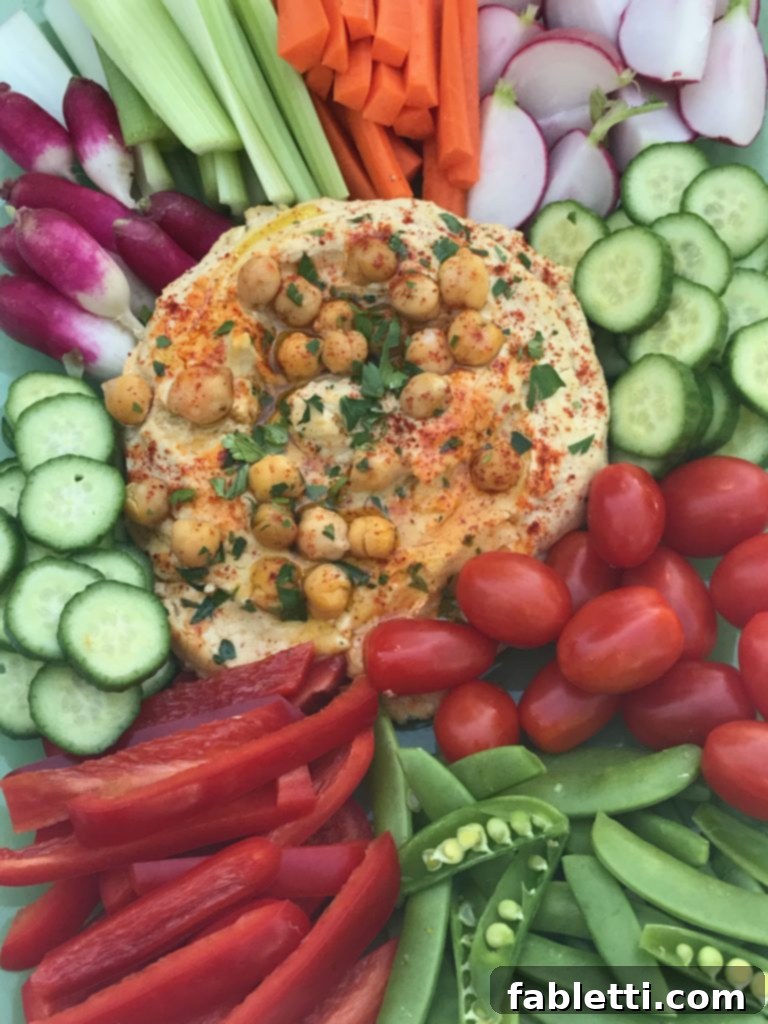
Your feedback is invaluable! Commenting on and rating recipes is one of the best ways to support your favorite food bloggers. If you’ve made this delicious oil-free hummus, please consider leaving a five-star rating and a comment below. We’d also love to see your creations! Share your photos on Instagram by tagging me @dkhealthcoach and using the hashtag #debraklein.
📖 Recipe: Oil-Free Hummus
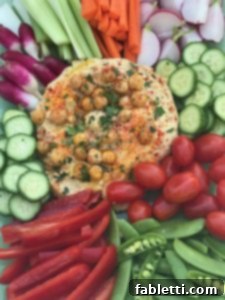
Oil-free Hummus
Debra Klein
Oil-free Hummus is rich and creamy, super nutritious, and so delicious. Making healthy hummus from scratch using dried beans is inexpensive and incredibly easy.
Rated 5 out of 5 stars from 2 votes.
Print Recipe | Pin Recipe
Prep, Cook, and Total Time
Prep Time: 10 mins
Cook Time: 1 hr
Additional Time (Soaking): 8 hrs
Total Time: 9 hrs 10 mins
Recipe Details
Course: Appetizer
Cuisine: Mediterranean
Servings: 6
Calories: 257 kcal
Equipment
- Food Processor
- Instant Pot (optional, for faster cooking)
Ingredients
- 1 cup dried chickpeas
- 1 teaspoon baking soda
- 4 cloves garlic
- ½ cup tahini
- 2 lemons, juiced
- 1 ½ teaspoons sea salt
- 1 teaspoon cumin
- ⅓ cup ice-cold water
Instructions
- Place dried chickpeas in a glass bowl and cover generously with water. Chickpeas will double in size, so ensure there is enough water to keep them submerged as they soak. Soak overnight, or for a minimum of 8 hours. Drain and rinse thoroughly. Drain again.
- Place the drained chickpeas in a medium saucepan. Sprinkle with baking soda, add the garlic cloves, and then add enough water to cover the chickpeas by 2-3 inches. Bring to a boil, then reduce heat and simmer for 60-75 minutes, skimming off any skins or foam that rise to the top. The chickpeas should be tender enough to squish easily between your thumb and forefinger, but not mushy.
Alternatively, use an Instant Pot for faster cooking – see notes below for instructions. - Drain and rinse the cooked chickpeas until no bubbles remain. You should have approximately 3 cups (roughly equivalent to 2 cans). Add the cooked garlic to the bowl of your food processor. Carefully peel the skins off the chickpeas; this can often be done easily by rubbing them with a clean kitchen towel. Discard the skins and add the peeled chickpeas to the food processor, reserving ¼ cup of whole cooked chickpeas for garnish. Add the tahini, lemon juice, salt, and cumin. Process until very smooth.
- With the food processor still running, gradually add about half of the ice-cold water. Continue processing, adding the remaining water one tablespoon at a time, until your desired consistency is reached. You may not need all of the water. For a creamier texture, add a little more tahini; for a thinner consistency, add more water. Taste for seasoning and adjust with additional salt or lemon juice as needed.
- Serve at room temperature. Garnish with the reserved whole chickpeas and a sprinkle of paprika or za’atar.
Notes
- Chickpeas: If you’re short on time and cannot use dried chickpeas, substitute with 2 cans (15-ounce each) of cooked chickpeas. Rinse and drain them well, then proceed directly to Step 3 of the instructions.
- Instant Pot Cooking: For a faster cooking method without soaking, you can use an Instant Pot. Place dried chickpeas (soaked or unsoaked) and garlic in the Instant Pot with baking soda, and cover with water as directed. Seal the pot and cook on high pressure for 25 minutes for soaked beans or 40 minutes for dry (unsoaked) beans. Allow for natural pressure release, then continue with the draining and processing steps above.
- Optional Toppings: Enhance your hummus with a variety of delicious toppings. Consider a swirl of high-quality olive oil (if not strictly oil-free), an extra sprinkle of paprika or za’atar, a handful of chopped fresh herbs (like parsley or cilantro), additional whole chickpeas, a drizzle of sriracha for a kick, or finely chopped jalapeños for heat.
Nutrition Information (per serving)
Calories: 257 kcal
Carbohydrates: 28g
Protein: 10g
Fat: 13g
Saturated Fat: 2g
Polyunsaturated Fat: 6g
Monounsaturated Fat: 5g
Sodium: 780mg
Potassium: 439mg
Fiber: 8g
Sugar: 4g
Vitamin A: 48 IU
Vitamin C: 21mg
Calcium: 76mg
Iron: 3mg
The nutrition calculations provided here are estimates based on online tools. For the most precise nutritional information, it is recommended to calculate values with the exact ingredients you use. You are ultimately responsible for verifying the accuracy, completeness, and utility of any nutritional data.
Did you make this recipe? Please leave a review below, then snap a picture and tag me @dkhealthcoach or use hashtag #dkhealtcoach on Instagram so I can see it!
